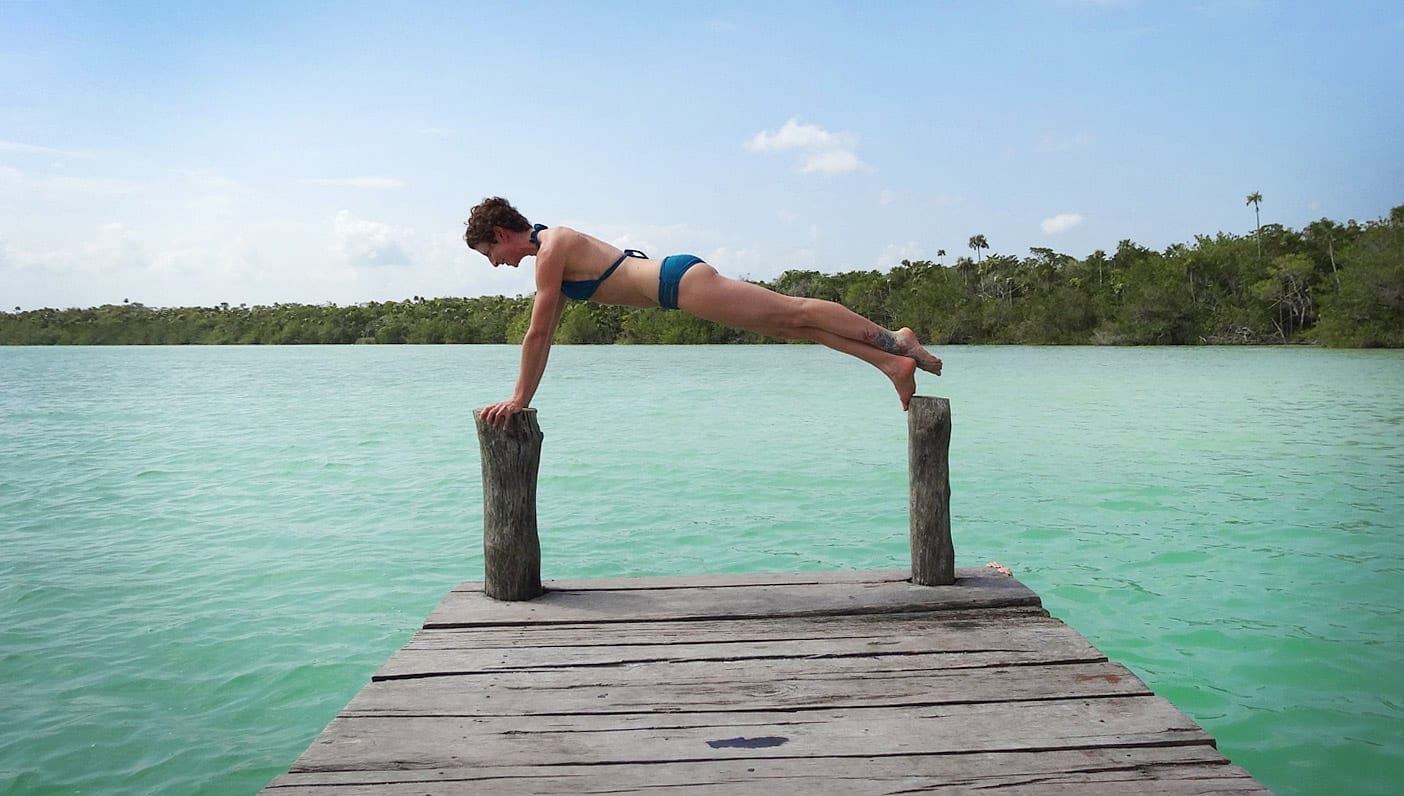
Try pilates on Wanderlust TV! For a 14-day free trial, click here.
In the not so distant past, there were two distinct camps for lovers of niche movement practices: yoga and pilates. Though the two disciplines are highly complementary, practitioners rarely co-mingled. “I don’t like to Om,” one of my diehard pilates class regulars would say. “It’s not ‘flowy’ enough,” stated a dedicated yogini friend who swore off pilates for years. Everyone had an emphatic rationale for why they didn’t want to explore the other side of the fence. Until now. With emerging trends like fusion classes that bridge the gap across multiple modalities such as yoga, pilates, dance, martial arts, and body conditioning, what was once a compartmentalized fitness phenomenon is now becoming linked and loved.
But even beyond this trend, there are many reasons yogis should try pilates. Here are just a few.
Powerful Core
In pilates, every part of the regimen revolves around the core. Joseph Pilates often referred to the core as the “powerhouse,” the abdominals, lower back and pelvic floor musculature, that, when activated, provide a solid base of support for steady movement. Not only does a strong core make for a safer practice, a yogi needs an unwavering foundation to take on the challenges of arm balances, inversions, and backbends.
Lengthening & Strengthening
To activate the muscles needed for yoga, they need to be strengthened, lengthened, and toned throughout your body’s range of motion. The pilates reformer—a piece of equipment built with a carriage platform upon which to lie, sit, or stand on while working spring resistance in varying degrees of tension—is built to induce exactly this type of lean, mean muscle tone in a variety of positions.
Vinyasa on the reformer, anyone? The reformer long stretch series is just that: A sequence including long stretch (think plank), down stretch (think upward facing dog) and up stretch (think vinyasa into downward dog). This series is performed with spring resistance to deepen range of motion and accentuate muscle elongation and strength of the arms, legs, back and core. Translate this kind of work onto your yoga mat and notice how much stronger you feel the next time you vinyasa.
Control
Pilates is often referred to as the “Art of Contrology.” It takes a tremendous amount of integrative body awareness to directly target muscle activation flanked by optimal form and alignment. While many yogis love to let go and flow, having a keen sense of focus and control of movement mechanics provides support for a fluid practice.
Take the move call “the teaser” in pilates, a show stopper of ultimate control. While the teaser is movement-driven, boat pose (navasana), its yoga counterpart, is often simply held… For a long time. Both require tremendous control over the arms, legs, back and core, so that you don’t turn into a wobbly mess. From movement into stillness, the teaser is navasana’s soul sister of motor control, stirring peak pose euphoria. Regularly performing pilates teasers will result in an expert navasana practice, while also supporting other poses that require secure balance and precision, such as bakasana (crow pose) or a headstand.
Can pilates and yoga thrive as independent practices? Yes, of course. Can a yoga practice be improved and enhanced physically through pilates? ABSOLUTELY. Rather than upholding those old school separatist tendencies, let pilates become your new favorite ally of asanas.